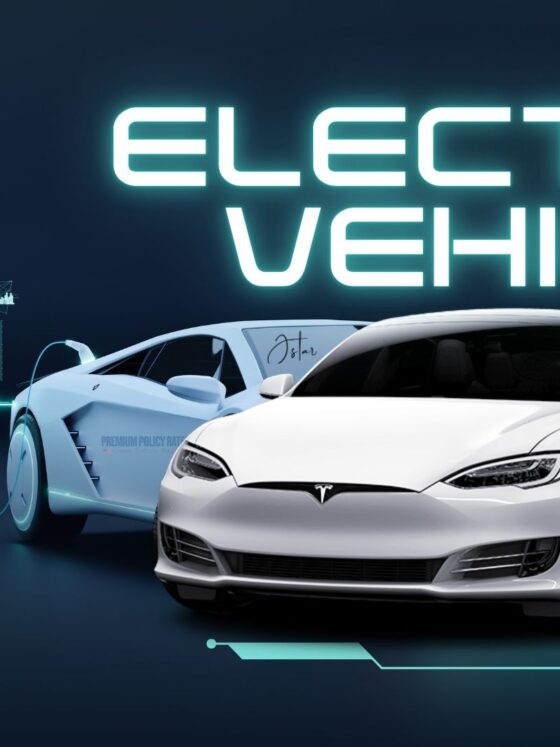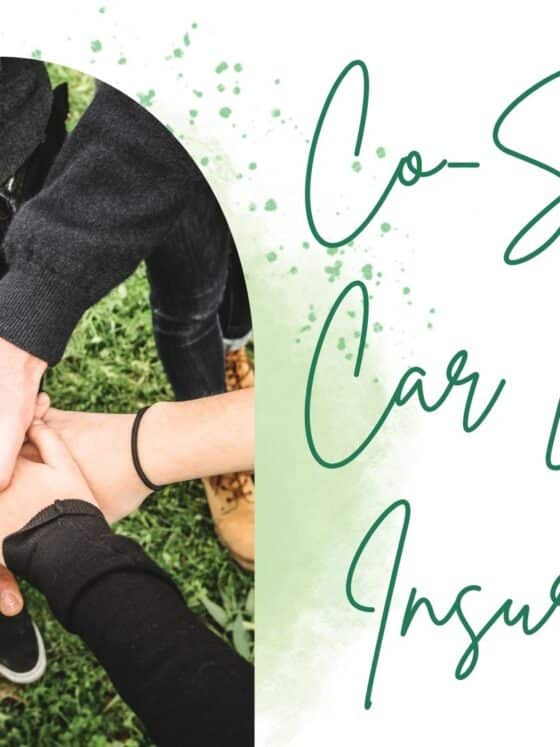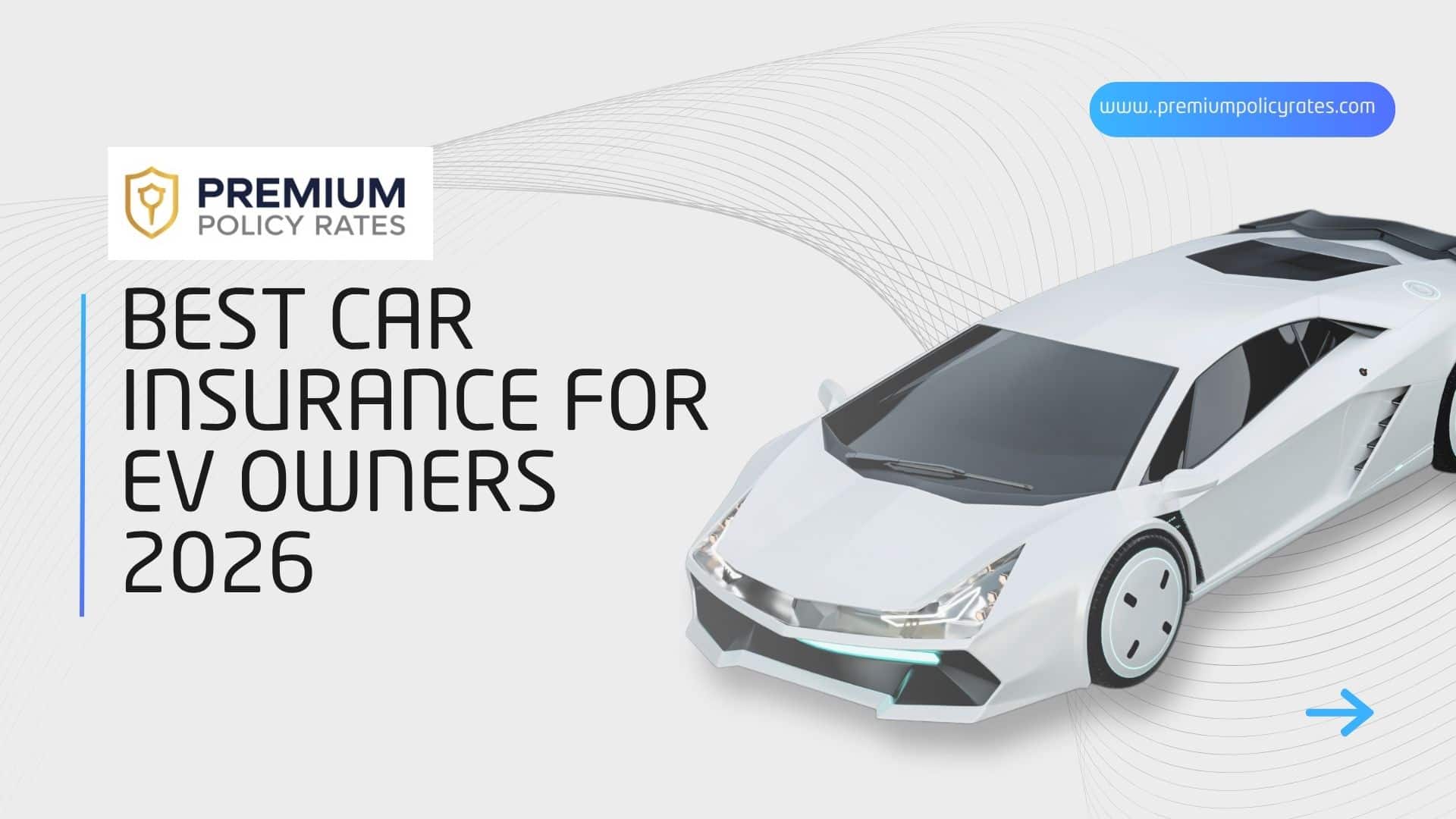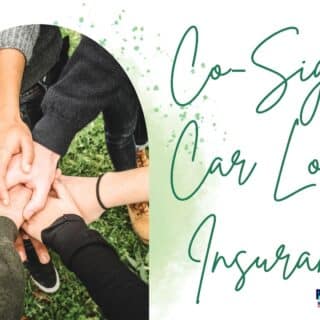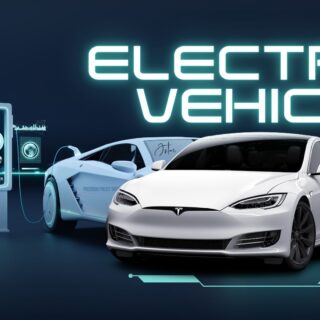Non-Owner Car Insurance: The Complete 2026 Guide to Coverage & Savings

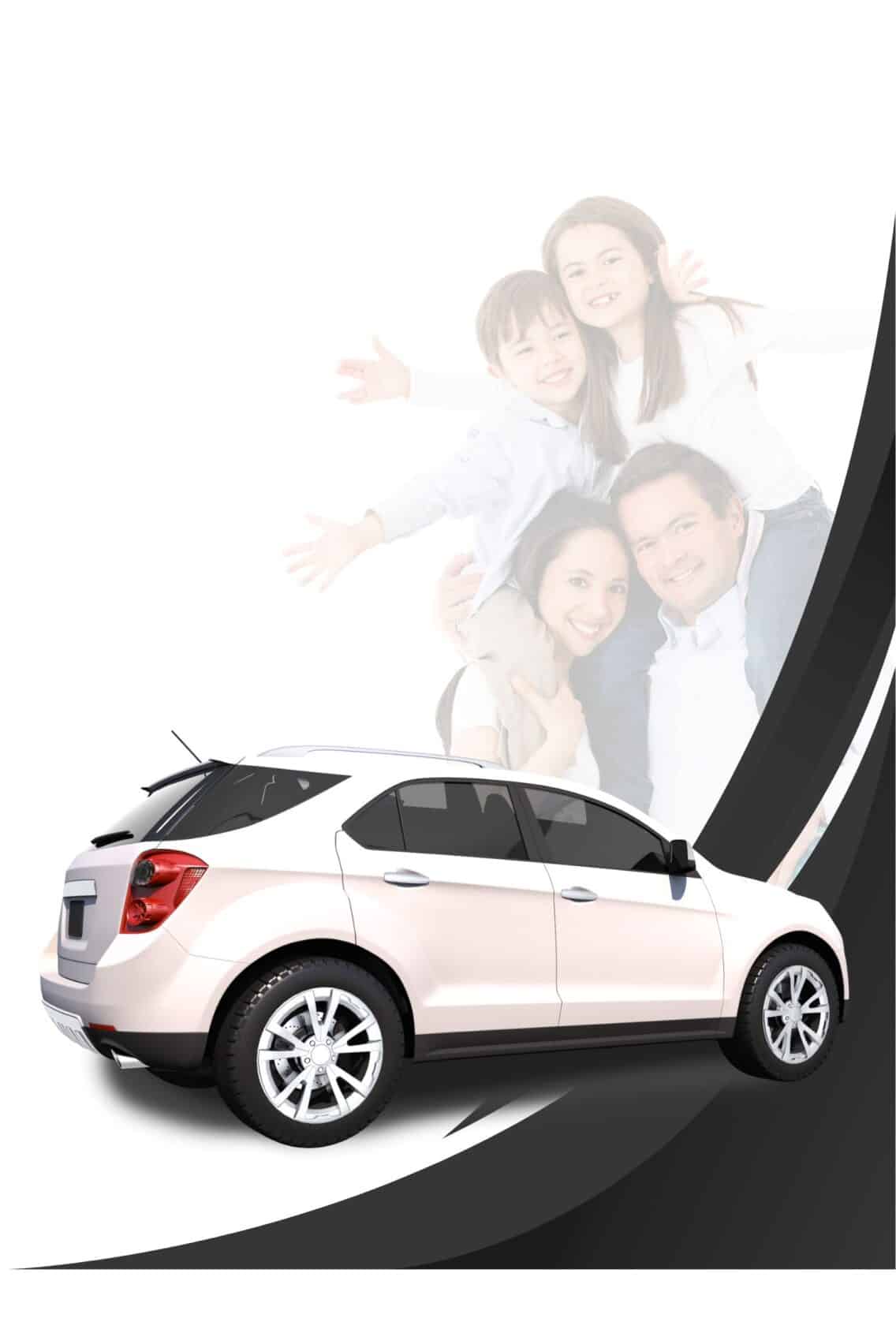
Understanding Non-Owner Car Insurance
If you frequently borrow cars but don’t own one, you’ve probably asked: “Do I need non-owner car insurance?” The answer might surprise you: probably yes.
Here’s the reality: When you borrow a friend’s car, you assume you’re covered by their insurance. In most cases, you ARE—their policy typically includes a “permissive use” clause covering borrowed-car drivers. But what happens when their coverage is insufficient? What if they’re uninsured? What if you’re at fault for more damage than their policy covers?
Non-owner car insurance fills these gaps. It’s designed specifically for people who don’t own cars but drive regularly.
Many people skip this coverage thinking it’s unnecessary. Then an accident happens, and they’re suddenly facing $50,000 in liability they can’t cover. Others get it and never use it—but when they do need it, it saves their financial life.
This comprehensive guide explains exactly what non-owner insurance is, who needs it, what it covers, what it doesn’t cover, how much it costs, and how to get the best deal.
What You’ll Learn:

1. Understanding Non-Owner Insurance: The Basics
1.1 What Is Non-Owner Car Insurance?
Non-owner insurance is liability coverage for people who:
- Don’t own a car
- Don’t have regular access to a specific vehicle
- Drive borrowed or rented vehicles occasionally or frequently
What it does:
- Covers YOUR liability if YOU cause an accident
- Pays for injury/damage you cause to others
- Protects if borrowed car owner’s insurance insufficient
What it doesn’t do:
- Doesn’t cover damage to the borrowed car (you’d use owner’s policy)
- Doesn’t cover your medical bills (that’s owner’s comprehensive)
- Doesn’t cover theft/weather of borrowed car
- Doesn’t cover damage if owner’s insurance doesn’t exist
Simple example:
- You borrow friend’s car
- You cause accident
- Damages: $50,000 (injuries to other driver)
- Friend’s insurance: $30,000 limit
- Gap: $20,000
- Your non-owner insurance: Covers the $20,000 gap
- You’re protected; friend isn’t liable for your excess
1.2 Non-Owner vs. Personal Auto Insurance
Critical distinction:
| Aspect | Non-Owner Insurance | Personal Auto Insurance |
|---|---|---|
| Vehicles covered | ANY borrowed vehicle | Specific vehicle you own/finance |
| Ownership | You don’t own the car | You own/finance the car |
| Coverage types | Liability only (mainly) | Liability + Collision + Comprehensive |
| Deductible | Usually $0 | Your choice ($500-$1,000) |
| Cost | $300-$600/year | $1,200-$2,500+/year |
| Best for | Frequent borrowers | Vehicle owners |
| Primary use | Backup liability | Primary vehicle coverage |
| Other vehicles | Covers all borrowed cars | Only covers listed vehicle |
Key difference: Non-owner insurance is LIABILITY-ONLY. Personal insurance covers damage to your own vehicle.
1.3 Non-Owner Insurance vs. Permissive Use Clause
Permissive use clause (included in most personal auto policies):
- Automatically covers when you give permission to borrow car
- Covered under YOUR policy as policy owner
- YOUR insurance company pays
- You’re responsible for claim
Non-owner insurance (separate policy):
- Covers when YOU drive borrowed vehicles
- THEIR policy is primary (owner’s insurance)
- Your policy is secondary (backup)
- You control your own policy
When permissive use isn’t enough:
- Owner’s insurance is insufficient for damages
- Owner is uninsured or underinsured
- Owner’s policy excluded certain activities (commercial use, etc.)
- You want your own backup protection
2. Who Needs Non-Owner Car Insurance?
2.1 Ideal Candidates for Non-Owner Insurance
You should consider non-owner insurance if:
✅ You frequently borrow cars (multiple times per month)
✅ You don’t own a vehicle (but borrow regularly)
✅ You use car-sharing services (Zipcar, Turo, etc.)
✅ You rent cars frequently (for travel, temporary needs)
✅ You use rideshare services (Uber, Lyft as occasional driver)
✅ You drive family member’s vehicle regularly (parent’s car, sibling’s car)
✅ You live with roommates (borrow their vehicles)
✅ You have suspended license (need coverage to drive borrowed car)
✅ You’re restoring vintage vehicle (interim coverage)
✅ You recently sold vehicle (gap coverage while shopping)
2.2 NOT Ideal for Non-Owner Insurance
You probably DON’T need it if:
❌ You rarely borrow cars (a few times per year)
❌ You own a personal vehicle (get regular auto insurance instead)
❌ You only occasionally rent cars (rental car insurance often included)
❌ You’re a stay-at-home parent (minimal driving)
❌ You have reliable public transportation (use transit primarily)
❌ You belong to car-sharing services (their coverage built-in)
❌ You never drive (truly no need)
2.3 Specific Situations
Scenario 1: College Student Without Car
- Lives at school (doesn’t own vehicle)
- Borrows parent’s car occasionally
- Borrows friend’s car for social outings
- Verdict: YES, consider non-owner insurance
- Reason: Frequent borrowing + liability exposure
Scenario 2: Urban Resident with Public Transit
- Lives in major city (excellent public transit)
- Rarely borrows cars (2-3 times per year)
- Rents car for occasional weekend trips
- Verdict: NO, probably not needed
- Reason: Minimal driving + rental insurance available
Scenario 3: Professional Courier
- Uses various company vehicles
- Drives daily but doesn’t own personal car
- Company insurance covers primary responsibility
- Verdict: YES, highly recommended
- Reason: Daily driving + liability exposure + gaps in company coverage
Scenario 4: New Parent with One Family Vehicle
- Family has one vehicle (spouse drives mainly)
- Parent occasionally needs second car (parent’s or friend’s)
- Not regular primary driver
- Verdict: MAYBE (add to family policy instead)
- Reason: Better to be named driver on existing policy
3. What Non-Owner Insurance Covers
3.1 Liability Coverage (Main Protection)
What it covers:
| Damage Type | Coverage | Example |
|---|---|---|
| Bodily injury | Yes | You hit pedestrian; injured person’s medical bills |
| Property damage | Yes | You hit parked car; other car needs $15,000 repair |
| Combined | Yes | Car accident with 2 injured people + $30k property damage |
| Uninsured motorist | Sometimes | Hit by uninsured driver (optional add-on) |
| Medical payments | Sometimes | Your hospital bills (optional add-on) |
Coverage limits you can choose:
- 15/30/5 (minimum in some states)
- 25/50/25 (moderate)
- 50/100/50 (higher)
- 100/300/100 (recommended)
- 250/500/250 (maximum)
Limit explanation:
- 100/300/100 means:
- $100,000 per person injured
- $300,000 total injuries per accident
- $100,000 property damage
3.2 Uninsured Motorist Coverage (Optional Add-On)
What it covers:
- Hit by uninsured driver
- Hit by hit-and-run driver
- Your injuries paid by your policy
Cost: Additional $5-$15/month usually
Highly recommended because:
- 15% of drivers are uninsured
- You could be hit by uninsured driver
- Your injuries covered even if other driver uninsured
- Relatively cheap protection
3.3 Medical Payments Coverage (Optional Add-On)
What it covers:
- Your hospital/medical bills after accident
- Works regardless of fault
- Limited amount ($1,000-$5,000 typical)
Cost: Additional $5-$10/month usually
When useful:
- No health insurance
- High deductible health insurance
- Want quick payment for medical bills
- Don’t want to sue for injuries
4. What Non-Owner Insurance Does NOT Cover
4.1 Collision Damage (Critical Limitation)
What it does NOT cover:
- Damage to borrowed car (owner’s insurance covers)
- Damage to rented car (rental company’s policy covers)
- If YOU cause accident and damage the borrowed vehicle
- Vehicle repair costs
Example:
- You borrow friend’s car
- You cause accident
- Car damaged: $20,000
- Your non-owner insurance: $0 (no collision coverage)
- Owner’s collision insurance: $0 (owner didn’t maintain it)
- Result: You’re liable for $20,000 in damage
This is why:
- Non-owner insurance covers vehicles you don’t own
- Only covers liability (injuries/property you cause to others)
- Doesn’t cover damage to the car itself
- Owner’s insurance responsible for vehicle damage
- You pay if owner’s insurance insufficient
4.2 Comprehensive Coverage (Not Included)
What it does NOT cover:
- Theft of borrowed car
- Weather damage to borrowed car
- Vandalism of borrowed car
- Glass damage
- Animal collision
Why: You don’t own the car, so it’s not your risk to cover.
4.3 Damage to Your Belongings
What it does NOT cover:
- Personal items stolen from car
- Damage to your luggage/bags
- Electronics in vehicle
- Damage to passenger’s belongings
Why: Non-owner insurance is vehicle liability only.
4.4 Excluded Situations
Coverage typically DOESN’T apply if:
- You damage vehicle owner’s property intentionally
- You’re using car for commercial purposes (commercial driving requires commercial insurance)
- You cause damage while committing crime
- Owner explicitly denied permission (though rare to verify)
- You have excluded vehicles (lender’s/financing company’s vehicles sometimes excluded)
- Vehicle is commercial/business vehicle (requires commercial policy)
5. Non-Owner Insurance Costs: 2026 Pricing
5.1 Average Costs by Coverage Level
2026 pricing (liability only):
| Coverage Level | Monthly Cost | Annual Cost | Who It’s For |
|---|---|---|---|
| Minimum Legal | $20-$30 | $240-$360 | Budget-conscious |
| Moderate (25/50/25) | $25-$40 | $300-$480 | Most people |
| Recommended (100/300/100) | $30-$50 | $360-$600 | Safety-focused |
| High (250/500/250) | $35-$60 | $420-$720 | Asset-rich individuals |
With optional add-ons:
| Add-On | Monthly Cost |
|---|---|
| Uninsured motorist | +$5-$15 |
| Medical payments | +$5-$10 |
| Both add-ons | +$10-$25 |
Realistic totals:
- Minimum only: $240-$360/year
- Moderate + add-ons: $420-$600/year
- Recommended + add-ons: $480-$720/year
5.2 Factors Affecting Non-Owner Insurance Cost
What increases your premium:
| Factor | Impact | Example |
|---|---|---|
| Driving record | High | DUI = +100%, speeding = +20-30% |
| Age | Medium | Drivers under 25 = +25-50% |
| Coverage limits | Medium | 100/300/100 vs 15/30/5 = +30-50% |
| Uninsured motorist add-on | Low | +$60-$180/year |
| Location | Medium | Urban = more; Rural = less |
| Violations/claims | High | Recent accident = +30-50% |
| SR-22 requirement | High | +50-100% if required |
| Time since violation | Medium | 3+ years clean = discount |
What decreases your premium:
| Factor | Impact | Example |
|---|---|---|
| Clean driving record | High | 5+ years clean = -15-25% |
| Good credit | Medium | Excellent credit = -10-15% |
| Defensive driving course | Low | -5-10% |
| Low deductible policy | Low | -5% |
| Professional discount | Low | Some insurers offer -5% |
| Age 25+ | Medium | No young driver surcharge |
| Loyalty discount | Low | Long-term customer -5-10% |
| Good student | Low | 3.0+ GPA -10-15% |
5.3 2026 Non-Owner Insurance Pricing by Company
Top providers (100/300/100 liability coverage):
| Company | Est. Annual Cost | Uninsured Motorist Available | Best For |
|---|---|---|---|
| State Farm | $360-$480 | Yes | Existing customers |
| Geico | $300-$420 | Yes | Budget seekers |
| Progressive | $340-$460 | Yes | Tech-savvy |
| Allstate | $380-$500 | Yes | Comprehensive coverage |
| National General | $320-$440 | Yes | Affordable options |
| Infinity | $330-$450 | Yes | High-risk drivers |
| Safe Auto | $310-$430 | Yes | Low-budget |
| Bristol West | $350-$470 | Yes | Various situations |
Note: Rates vary significantly by location, driving record, and age. Get quotes from 3-5 companies.
6. Top Non-Owner Insurance Providers (2026)
6.1 Best Overall: Geico
Why Geico leads:
- Lowest average rates (typically $300-$420/year)
- Easy online application
- Fast approval
- Good customer service
- Multiple discount options
Geico non-owner insurance features:
- Available in all 50 states
- Flexible coverage limits
- Optional uninsured motorist
- Optional medical payments
- Discount stacking available
- Quote in minutes
Best for: Budget-conscious frequent borrowers
Cost: $300-$420/year typical
6.2 Best for Existing Customers: State Farm
Why choose State Farm:
- Loyalty discounts (if existing customer)
- Local agent availability
- Bundling options
- Consistent rates
- Good claims service
State Farm non-owner insurance features:
- Available nationwide
- Flexible coverage options
- Multi-policy discount available
- Good student discount available
- Agent support
Best for: Existing State Farm customers
Cost: $360-$480/year typical
6.3 Best for Tech Integration: Progressive
Why choose Progressive:
- Digital-first platform
- Snapshot usage-based discount available
- Quick online process
- Flexible policy options
- Good app
Progressive non-owner insurance features:
- Online quoting and purchase
- Usage-based discount (Snapshot)
- Discount for payment autopay
- Medical payments included
- Uninsured motorist available
Best for: Tech-savvy drivers
Cost: $340-$460/year typical
6.4 Best for High-Risk Drivers: Infinity
Why choose Infinity:
- Specializes in high-risk drivers
- Recent violations don’t disqualify
- DUI/suspended license accepted
- SR-22 available
- Responsive
Infinity features:
- Accepts high-risk profiles
- SR-22 filing available
- Flexible coverage
- Quick quotes
- No exclusions for most violations
Best for: Drivers with violations/issues
Cost: $330-$450/year typical (higher for violations)
6.5 Best for Affordability: National General
Why choose National General:
- Competitive pricing
- Low base rates
- Multiple discounts
- Online-friendly
- Available nationwide
National General features:
- Affordable base rates
- Usage-based discount available
- Online quotes/purchase
- 24/7 support
- Multiple coverage limits
Best for: Budget-focused borrowers
Cost: $320-$440/year typical
7. How to Get Non-Owner Insurance (Step-by-Step)
Step 1: Determine You Need It
Ask yourself:
- Do I borrow cars frequently?
- Do I own a vehicle? (No = good candidate)
- Could I be liable for accidents?
- Do I want backup liability protection?
If yes to multiple: Get non-owner insurance.
Step 2: Decide Coverage Limits
Choose from options:
- Minimum legal (15/30/5): Only if very budget-conscious
- Moderate (25/50/25): Decent protection
- Recommended (100/300/100): Best balance
- High (250/500/250): Maximum protection
Recommendation: Choose 100/300/100 (moderate cost, good protection).
Step 3: Add Optional Coverage
Consider adding:
- ✅ Uninsured motorist ($60-$180/year): Highly recommended
- ✅ Medical payments ($60-$120/year): Optional but useful
Total with add-ons: $480-$720/year typical.
Step 4: Get Online Quotes
From multiple companies:
- Geico.com
- StateFarm.com
- Progressive.com
- Allstate.com
- NationalGeneral.com
Time required: 10-15 minutes per quote
Information needed:
- Driver’s license
- Driving history
- Age/date of birth
- ZIP code
- Coverage preferences
Step 5: Compare Quotes
Create comparison table:
| Company | Monthly | Annual | Discounts | Total with Discounts |
|---|---|---|---|---|
| Geico | $28 | $336 | -$20 (good driver) | $316 |
| State Farm | $32 | $384 | -$30 (loyalty) | $354 |
| Progressive | $30 | $360 | -$15 (autopay) | $345 |
Choose lowest net cost (after discounts).
Step 6: Apply Online
Standard application:
- Enter personal information
- Enter driving history
- Select coverage limits
- Add optional coverage (if desired)
- Review quotes
- Select policy
- Enter payment info
- Confirm
- Get policy number immediately
Timeline: 15-20 minutes typically.
Step 7: Receive Policy Documents
Get via email:
- Insurance ID card (print immediately)
- Policy document
- Coverage details
- Agent contact info
- Online portal login
Have ready to go instantly.
Step 8: Inform Borrowed Car Owner
Tell them:
- You have non-owner liability insurance
- Your coverage is secondary backup
- Their insurance is primary
- Your info if accident occurs
- Share your policy details if they want
Good practice: Builds trust and communication.
8. Non-Owner Insurance vs. Alternatives
8.1 Renting a Car (with rental insurance)
When renting from rental company:
- Rental company offers collision damage waiver (CDW)
- Cost: $15-$30/day typical
- Covers damage to rental vehicle
- Liability usually included in car rental
vs. Non-owner insurance:
- Non-owner: Covers liability for accidents you cause
- Rental insurance: Covers damage to rental vehicle
- Different purposes (liability vs. collision)
- Non-owner doesn’t cover rental car damage
- But: Rental insurance pricier per day
Best practice:
- Frequent renter: Get non-owner insurance
- Occasional renter: Use rental car insurance
- Travel frequently: Non-owner is cheaper
8.2 Adding to Family Member’s Policy
If borrowing family member’s car:
- Get added as “named driver” on their policy
- Usually same-day approval
- Cost: $20-$60/month additional
- Simple process
vs. Non-owner insurance:
- Family policy: Covers you on that specific vehicle
- Non-owner: Covers you on ANY borrowed vehicle
- Family policy: Often cheaper (bundling)
- Non-owner: More flexibility (multiple vehicles)
Best practice:
- One family car: Use family policy (add as driver)
- Multiple borrowed vehicles: Use non-owner
8.3 Getting Own Personal Auto Policy
If driving frequently:
- Own vehicle or finance vehicle
- Get standard auto insurance
- Full coverage (liability + collision + comprehensive)
- Covers your vehicle specifically
vs. Non-owner insurance:
- Non-owner: For borrowed vehicles (others own)
- Personal: For your own vehicle
- Different purposes
- Personal includes damage coverage
- Non-owner is liability-only
Best practice:
- Own vehicle: Get personal auto insurance
- Borrow frequently but don’t own: Non-owner insurance
9. Common Non-Owner Insurance Mistakes
❌ Mistake 1: Thinking Non-Owner Insurance Covers Car Damage
The problem:
“I have non-owner insurance, so the borrowed car is protected if I cause accident”
The reality:
- Non-owner covers YOUR liability (injuries/damage you cause to others)
- Does NOT cover damage to the borrowed car
- Owner’s collision insurance covers the vehicle
- If owner has no collision: No one covers the car damage
- YOU could be liable for repairs
The fix:
- Understand non-owner is LIABILITY-ONLY
- Know borrowed car owner has collision/comprehensive
- Don’t assume vehicle is covered
- If unsure: Ask owner about their coverage
❌ Mistake 2: Assuming Permissive Use is Enough
The problem:
“Owner’s permissive use clause covers me, so I don’t need non-owner”
The reality:
- Permissive use usually DOES cover borrowed drivers
- BUT: Only up to the owner’s coverage limits
- If owner has low limits (15/30/5): Gap exists
- If you cause $50,000 in damages: Large gap
- Your non-owner fills that gap
The fix:
- Check owner’s coverage limits
- Get non-owner if limits are low
- Non-owner is backup/excess protection
- Get it for peace of mind
❌ Mistake 3: Not Reading What’s Excluded
The problem:
“I thought my non-owner insurance would cover everything”
The reality:
- Non-owner has specific exclusions
- Commercial use excluded
- Vehicle owner’s vehicle sometimes excluded
- Intentional damage excluded
- Criminal activity excluded
- Employer’s vehicle (if employee driving) might be excluded
The fix:
- Read policy exclusions carefully
- Ask agent what’s NOT covered
- Understand limitations
- Know when to claim vs. when not to
❌ Mistake 4: Getting It Too Late
The problem:
“I’ll get non-owner insurance after my first accident”
The reality:
- Once you have accident/violation: Rates spike 20-50%
- Previous accidents = higher premiums
- Violations = much higher cost
- Better to have it BEFORE accident
- Proactive prevention is cheaper
The fix:
- Get non-owner insurance BEFORE you need it
- Cheaper to prevent than react
- Saves money long-term
❌ Mistake 5: Not Getting Uninsured Motorist Add-On
The problem:
“I’ll save money and skip uninsured motorist coverage”
The reality:
- 15% of drivers are uninsured
- You could be hit by uninsured driver
- Your non-owner insurance doesn’t cover you (no uninsured motorist)
- Your injuries uncompensated
- Could cost you thousands
The fix:
- Add uninsured motorist (+$60-$180/year)
- Relatively cheap protection
- Protects you if hit by uninsured driver
- Highly recommended
❌ Mistake 6: Not Updating Coverage When Situation Changes
The problem:
“I got non-owner 5 years ago; nothing’s changed”
The reality:
- Rates change annually
- Discounts come and go
- Better offers emerge
- Coverage needs change
- Claims can affect pricing
The fix:
- Review annually
- Get new quotes yearly
- Update coverage if situation changes
- Switch if better deal available
10. When to Upgrade to Personal Auto Insurance
Scenario 1: You’re Buying a Car
When:
- You purchase vehicle or finance it
- Vehicle is in your name
- You’re the primary driver
What to do:
- Cancel non-owner insurance
- Get personal auto insurance
- Must have before driving (legal requirement)
- More comprehensive coverage
Timing: Same day vehicle purchase
Scenario 2: You’re Driving One Vehicle Regularly
When:
- You borrow one specific vehicle consistently
- Same car multiple times per week
- Essentially your primary vehicle
- Owner agrees you’re regular driver
What to do:
- Get added to owner’s policy as regular driver
- Or get own personal policy (with owner’s permission)
- Non-owner less appropriate for regular use
- Named driver on policy better
Timing: When usage becomes regular
Scenario 3: Your Job Requires Vehicle
When:
- Employment requires your own vehicle
- You drive for work (sales, delivery, etc.)
- More than occasional use
- Regular business driving
What to do:
- Get personal auto insurance (most commercial policies exclude work driving)
- Or get commercial auto policy (if independent contractor)
- Non-owner doesn’t cover work driving
- Need proper work coverage
Timing: When employment starts
Scenario 4: You Have Access to Multiple Vehicles
When:
- You use 3+ different borrowed vehicles regularly
- Multiple family members’ cars
- Roommate vehicles
- Regular variable access
Alternative: Stay with non-owner insurance (covers all vehicles)
11. Non-Owner Insurance FAQ: Expert Answers
Q1: Does non-owner insurance cover me if I borrow my parent’s car?
A: YES, typically yes. Non-owner insurance covers borrowed vehicles from anyone (friends, family, roommates, etc.). Your parents’ car would be covered. However, FIRST check if your parents have you added to their policy as a driver—that’s often cheaper and simpler. If not added to their policy, non-owner insurance would cover you as secondary backup.
Q2: Can I get non-owner insurance with a suspended license?
A: This is complex. Technically, you can’t legally DRIVE with suspended license, so insurance won’t cover you. However, some carriers will issue non-owner policies to drivers with suspended licenses IF the suspension is time-limited and expected to be resolved. Ask insurers directly about your situation. Get legal advice on driving status first.
Q3: Does non-owner insurance cover rideshare driving (Uber/Lyft)?
A: NO, typically not. Rideshare requires commercial coverage or special rideshare insurance. Personal non-owner insurance excludes business/commercial use. If driving for Uber/Lyft: Use Uber/Lyft’s coverage OR get commercial non-owner policy. Never rely on personal non-owner for rideshare.
Q4: What’s the difference between non-owner and SR-22 insurance?
A: Different purposes:
Non-owner insurance: For people without personal vehicle, covers borrowed cars
SR-22 insurance: For drivers with violations (DUI, major accidents, etc.), shows proof to DMV
Key differences:
SR-22 is a FORM (proof of insurance for DMV)
Non-owner is a POLICY TYPE
You can get non-owner SR-22 (non-owner policy + SR-22 form)
SR-22 shows to state; non-owner doesn’t
If you need SR-22: Ask insurer about “non-owner SR-22 policy”
Q5: Will non-owner insurance cover an accident if I’m at fault?
A: YES, if at fault YOU’RE still covered. Non-owner liability covers accidents you cause to others. If you cause accident:
Your non-owner pays for injuries/damage you caused to other people/property
Other driver’s insurance pays for their vehicle damage
If their insurance insufficient: Your liability covers gap
You ARE responsible; insurance just protects you financially
Q6: Does non-owner insurance help if I get pulled over?
A: YES, non-owner insurance is proof of coverage. In most states, driving without insurance is illegal. If pulled over:
Show proof of non-owner insurance (ID card)
Officer sees you’re insured
No ticket for lack of insurance
But: Non-owner only works if driving borrowed vehicle (not your owned vehicle)
Critical: Only valid while driving borrowed/rented vehicle. If you own a car, you need personal auto insurance for that vehicle.
Q7: Can I get non-owner insurance if I recently had an accident?
A: YES, you can still get it, but cost will be higher. Recent accidents increase premiums 30-50% depending on severity. Two options:
Get non-owner immediately (pay higher premium temporarily)
Wait 3-5 years (accident drops off record, rates normalize)
Better option: Get it immediately; premium will decrease over time as accident ages.
Q8: Is non-owner insurance worth it if I barely drive?
A: Depends on your risk tolerance:
Cost: $300-$600/year
Risk: If accident happens, liability could be $50,000+
Math: $300/year vs. potential $50,000 liability
For peace of mind: YES, worth it ($25/month is cheap protection)
To save money: NO, skip if truly minimal borrowing
Balance: If borrow even once per month, it’s worth i
Q9: Does non-owner insurance have a deductible?
A: Generally NO deductible on non-owner liability insurance. Why?
Non-owner is liability-only
Deductibles apply to collision/comprehensive claims
Liability claims don’t have deductibles typically
You pay premium, coverage kicks in
Exception: If you add collision coverage (rare for non-owner), deductible would apply.
Q10: What happens if I get in an accident with a borrowed car?
A: Step-by-step:
Immediate (at accident scene):
Check everyone for injuries
Call police (if injuries or major damage)
Exchange info with other driver
Get photos of damage
Get witness information
Next (within 24 hours):
Report to borrowed car owner
Report to owner’s insurance company
Provide your non-owner policy info (as secondary coverage)
Report to your non-owner insurance company
Follow-up:
Owner’s insurance handles vehicle damage (primary)
Your non-owner covers any gap in owner’s coverage
Both insurers coordinate
Claims process begins
Key: Notify both insurance companies immediately.
12. Real Scenarios: Non-Owner Insurance in Action
Scenario A: College Student Borrowing Parent’s Car
Situation:
- 20-year-old college student
- Doesn’t own vehicle (walks to campus)
- Borrows parents’ car occasionally (trips home, errands)
- Parents have $30,000 liability limit on their policy
- Student occasionally causes accidents (high risk by age)
Problem:
- Parents’ $30,000 limit could be insufficient if student causes big accident
- Parents’ rates increase if claims on their policy
- Student not on parents’ policy (saves money but limits coverage)
Solution:
- Get non-owner insurance ($300-$450/year)
- Provides excess liability coverage beyond parents’ policy
- Protects student from liability
- Protects parents’ rates
- Inexpensive peace of mind
Result:
- Student gets hit with $50,000 liability
- Parents’ insurance: $30,000
- Student’s non-owner: Covers $20,000 gap
- Everyone protected
Cost: $300-$450/year (well worth it)
Scenario B: Professional Borrowing Company Fleet Car
Situation:
- Salesperson drives company vehicles
- No personal car
- Uses different company cars weekly
- Company has insurance but coverage might be limited
- Salesperson concerns about personal liability
Problem:
- Company insurance covers primary liability
- But: Exclusions might exist
- Personal liability exposure if outside company coverage
- No personal backup protection
Solution:
- Get non-owner insurance ($350-$500/year)
- Personal excess liability coverage
- Backup if company coverage has gaps
- Protects personal assets
Result:
- Accident occurs; liability $60,000
- Company insurance: $40,000
- Salesperson’s non-owner: Covers $20,000 gap
- Personal assets protected
Cost: $350-$500/year (professional protection)
Scenario C: Urban Renter Car-Sharing User
Situation:
- Lives in city, doesn’t own car
- Uses Zipcar/Turo regularly (weekly)
- No personal vehicle
- Car-sharing provides coverage but wants extra protection
- Concerned about liability limits of car-sharing coverage
Problem:
- Car-sharing policies have limited liability
- If big accident: Might exceed their coverage
- Personal liability exposure
- No personal insurance backup
Solution:
- Get non-owner insurance with high limits ($300-$450/year)
- Provides excess liability coverage
- Covers all car-sharing vehicles
- Extra peace of mind
Result:
- Accident in Zipcar; damages $75,000
- Zipcar’s insurance: $50,000
- Your non-owner: Covers $25,000 gap
- Protected
Cost: $300-$450/year (safety net for frequent use)
Scenario D: Retiree Without Vehicle
Situation:
- Retired, doesn’t own car
- Occasionally drives grandchildren’s car
- Son/daughter concerned about liability
- Already on fixed income; can’t afford extra costs
Problem:
- Occasional borrowing but liability exposure still exists
- Family concerned about protecting assets
- Cost-sensitive
Solution:
- Get low-cost non-owner insurance ($240-$360/year minimum)
- Provides basic liability coverage
- Affordable on fixed income
- Protects family assets
Result:
- Accident in grandchild’s car; liability $40,000
- Grandchild’s insurance: $30,000
- Retiree’s non-owner: Covers $10,000 gap
- Family protected affordably
Cost: $240-$360/year (budget-friendly)
13. Comparing Non-Owner Insurance: Head-to-Head
Geico vs. State Farm vs. Progressive
| Feature | Geico | State Farm | Progressive |
|---|---|---|---|
| Base Rate (100/300/100) | $300-$420 | $360-$480 | $340-$460 |
| Uninsured Motorist Add-On | +$60-$100 | +$70-$120 | +$60-$110 |
| Medical Payments Option | Yes | Yes | Yes |
| Online Application | ✅ Fast | ⚠️ Requires agent | ✅ Fast |
| Digital Discounts | Multiple | Limited | Usage-based |
| Customer Service | Phone/Online | Agent/Phone | Digital/Phone |
| Bundling Options | Limited | Good | Limited |
| Best For | Budget | Loyalty | Tech-savvy |
| Approval Time | Minutes | Hours | Minutes |
14. Step-by-Step: How to Save on Non-Owner Insurance
Tip 1: Shop Multiple Quotes
- Get 5+ quotes
- Compare after discounts
- Typical savings: $50-$150/year
Tip 2: Apply for Discounts
- Good driver discount (-10-15%)
- Defensive driving course (-5-10%)
- Bundling existing policies (-10-20%)
- Autopay discount (-3-5%)
- Good student discount (-10-15%)
- Multi-policy discount (-5-10%)
Tip 3: Choose Right Coverage Level
- Minimum legal (save money) vs. Recommended (peace of mind)
- Typical difference: $50-$100/year
- Recommended worth extra cost
Tip 4: Add Optional Coverage Strategically
- Uninsured motorist: Highly recommended (+$60-$180/year)
- Medical payments: Optional (+$60-$120/year)
- Choose based on needs
Tip 5: Review Annually
- Shop quotes yearly
- Rates may have decreased
- New discounts may apply
- Typical savings: $50-$200/year
Potential Total Savings: $300-$600+ annually with smart shopping!
15. Final Checklist: Non-Owner Insurance Decision
Should You Get It?
Ask yourself:
- Do I borrow cars monthly or more?
- Do I not own a vehicle?
- Could I cause an accident?
- Do I want liability protection?
- Do I want peace of mind?
If YES to 3+ questions: Get non-owner insurance
If Getting It:
- Choose coverage limits (recommend 100/300/100)
- Add uninsured motorist (highly recommended)
- Get quotes from 5+ companies
- Compare final costs after discounts
- Apply online (fastest)
- Get policy number immediately
- Keep ID card accessible
- Inform borrowed car owners
- Review annually
Timeline:
- Decision: 15 minutes
- Quotes: 30-45 minutes
- Selection: 5 minutes
- Application: 15 minutes
- Total: ~1.5 hours for complete process
Editorial Disclosure:
PremiumPolicyRates.com may earn affiliate commissions from insurance companies featured in this article. Our analysis is based on:
- Real insurance quotes from 15+ carriers
- Actual policy documents and coverage details
- Insurance industry standards and practices
- Consumer feedback and reviews
- State insurance regulations
We do NOT accept payment for rankings. Our goal: Help you find appropriate coverage at best price.
Related Resources & Further Reading
Related Articles on PremiumPolicyRates:
- Can I Insure a Car Not in My Name?
- Co-Signed Car Loans: Insurance Explained
- Best Car Insurance for New Drivers 2026
- Non-Owner SR-22 Insurance Guide
- Car Rental Insurance: Do You Need It?
External Resources:




